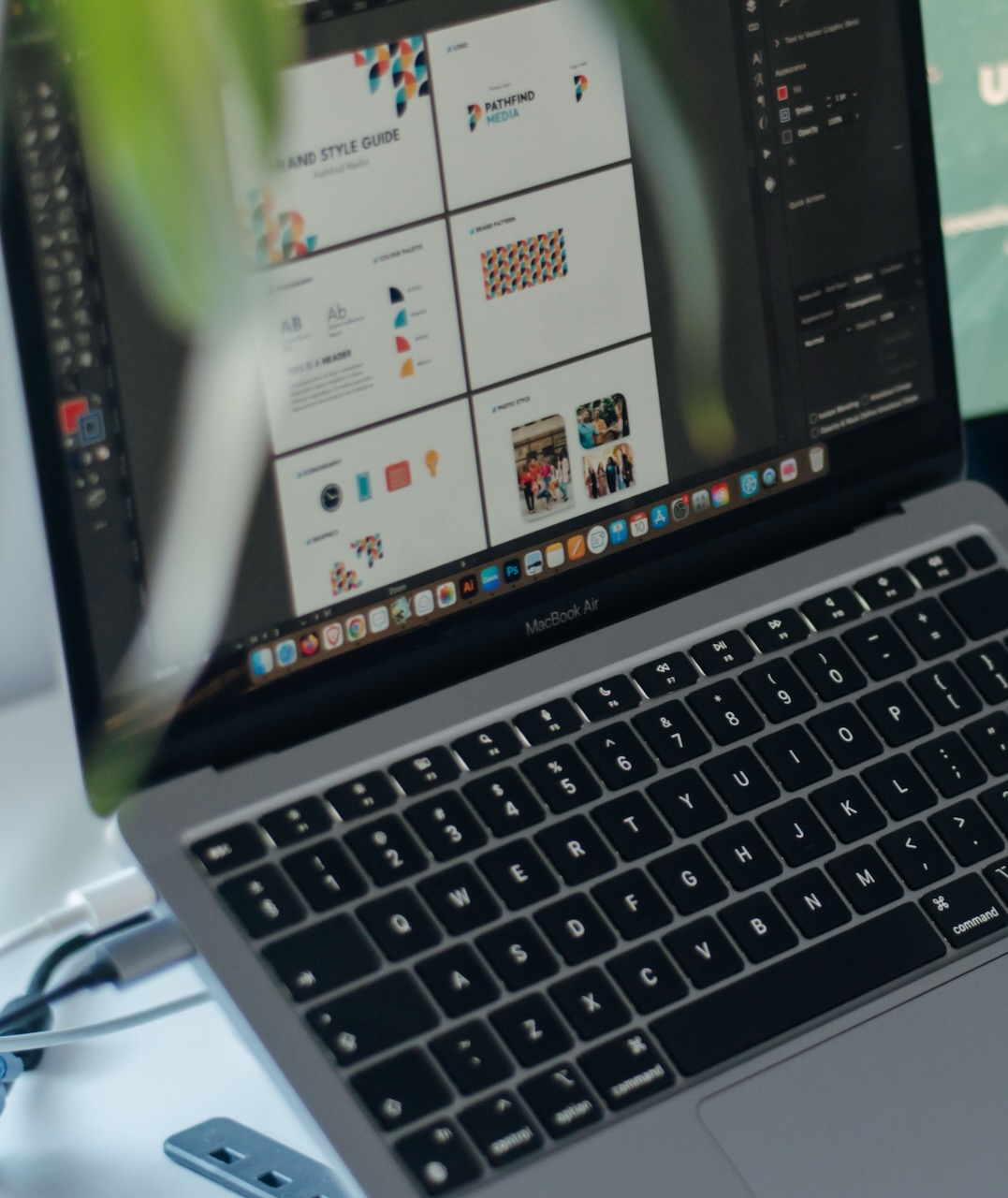A brand is so much more than just a logo.
The brand style guide is a reference document containing the unified, consistent brand look and feel with different use cases.

This is how the logo can be applied in different formats. Same logo, different layouts (e.g. stacked, horizontal, or inverted colour versions).
Still need a logo?
In the world of colour, there are 256 shades of grey. That's why colour codes exist: they ensure we get the look exactly right.
Typography involves font style, look, and structure, which aims to elicit certain emotions and convey specific messages. Words matter – in meaning but also in appearance.
Iconography is the use of symbols and visual elements to convey specific meanings. Icons represent features, functionality, and more.
Graphics are visual languages, such as images and illustrations, used to convey information or for aesthetic purposes. They enhance a design's appearance and communication.
A photo style is a distinctive and consistent visual approach or aesthetic used to create a cohesive and recognisable look and feel throughout all the images on a company's website or other documents.
A section divider is a visual or design element used to separate distinct content segments on a webpage or other document. It serves both a functional and aesthetic purpose, helping users navigate the page by visually breaking up the content into easily digestible parts.
A button style refers to the visual design and appearance of interactive buttons on a website. Button styles include attributes like colour, size, shape, typography, and animations, which collectively create a consistent and visually appealing look for buttons throughout a website.
A form style on a website encompasses the visual design and layout of interactive forms. This includes elements like text fields, checkboxes, radio buttons, and submit buttons. Form styles address attributes such as spacing, typography, and colours to create a cohesive and user-friendly form design.
Same logo, different layouts - such as stacked, horizontal or inverted colour versions - to apply the logo in different formats.
In the world of colour there are about 260 types of blue. So blue is not just blue. That is why colour codes exist - so we can be sure we are getting the colours exactly right.
Typography involves font style, appearance, and structure, which aims to elicit certain emotions and convey specific messages.
Iconography is the use of symbols and visual elements to convey specific meanings. Icons are used to represent features, functionality and more.
Graphics are visual languages, such as images and illustrations used to convey information or aesthetics. They enhance the visual appeal and communication of a design.
A photo style is a distinctive and consistent visual approach or aesthetic used to create a cohesive and recognisable look and feel in the images used throughout the website.
A section divider is a visual or design element used to separate distinct content sections or segments on a webpage. It serves both a functional and aesthetic purpose, helping users navigate the page by visually breaking up the content into easily digestible parts.
A button style refers to the visual design and appearance of interactive buttons on a website. Button styles include attributes like color, size, shape, typography, and animations, which collectively create a consistent and visually appealing look for buttons throughout the website.
A form style on a website encompasses the visual design and layout of interactive forms. This includes elements like text fields, checkboxes, radio buttons, and submit buttons. Form styles address attributes such as spacing, typography and colours to create a cohesive and user-friendly form design.